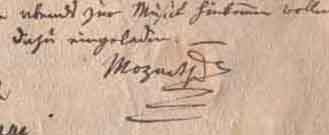Like Platonic forms, musical forms are idealized visions. Sometimes these idealized representations become the norm; both sonata form and depictions of rhinoceroses succumbed to this force. Because of its codification in the nineteenth century - primarily through the writings of the 19th century music theorist A.B. Marx - sonata form became the predominant organizational principle of music in the common practice period. Like theme-and-variations, or rondo, or even ritornello form, sonata form presents a series of procedures for structuring a piece of music; in practice, composers choose exactly how they will interact with these norms. In the Classical and Romantic symphony, you can expect the first movement to be in Sonata Form.
At its most basic level, sonata form enacts a conflict between two key areas and themes stated in each of these areas. Sonatas are in three parts: an exposition, development, and recapitulation. While there are exceptions, a standard Major key sonata will pit the tonic against the dominant.
A sonata opens with an exposition in which a first main theme(s) is presented in the tonic key. After a transition, a second theme or theme group appears. The second theme tends to be in a different key area and often has a different character. (Many times the exposition is preceded by a slow introduction which serves to quiet the listener for the disquisition that will follow.) After a repeat of the exposition, the thematic and tonal conflict is worked out in the development: a section in which fragments of themes are presented in a variety of keys and musical-tonal tension is brought to a high point. Finally the conflict is resolved, with the first theme invariably the winner, in the recapitulation. The material from the exposition is presented again, however the second theme is now presented in the key of the first theme. Often the recapitulation is followed by a short coda, or tail. Generally, the coda should provide an emphatic endorsement of the tonic key and a sturdy cadence. This is the basic framework. One of the things that makes a composition in sonata form interesting is the ways that composers deal with the restraints presented by this form. It is important to note that sonata form was codified long after the works that were said to be written in sonata form. It is difficult to find compositions that stick strictly to this form.
Mozart's symphonic output was a bit less prolific than that of his teacher Haydn, who gave the world over 100 symphonies. But given Mozart's short life (35 years) and the uniformly high quality of his compositions, 41 numbered symphonies is nothing to scoff at. (The actual total is anywhere between 55 or 71 depending on how broad one's definition of "Symphony" is.) Symphony 40, written toward the end of his life, depicts a different perspective from his earlier works, for instance, Symphony Number 9.
Beyond the maturity that comes from experience, one primary difference between the two symphonies is their tonality: Symphony 40 is one of only two of Mozart's numbered symphonies written in a minor key. Commentators tend to dwell on the pathos inherent in this key (G minor) and see this Symphony as a bellwether of Romanticism. In the context of Romanticsim, we often view the troubles within a piece of music as reflexive of some inner struggle of the "artist." Following through on their argument, the sadness of the minor key must reflect upon some aspect of Mozart's character. Such dated and simplistic discourses belie their origins - the 19th century - a time when scholars were apt to lionize the classical triumvirate of Haydn, Mozart and Beethoven and when ideas of music as a gateway to an artist's soul were the norm.
However one may interpret the work, it is hard to fault the designation of Mozart's fortieth symphony as a Masterpiece.

